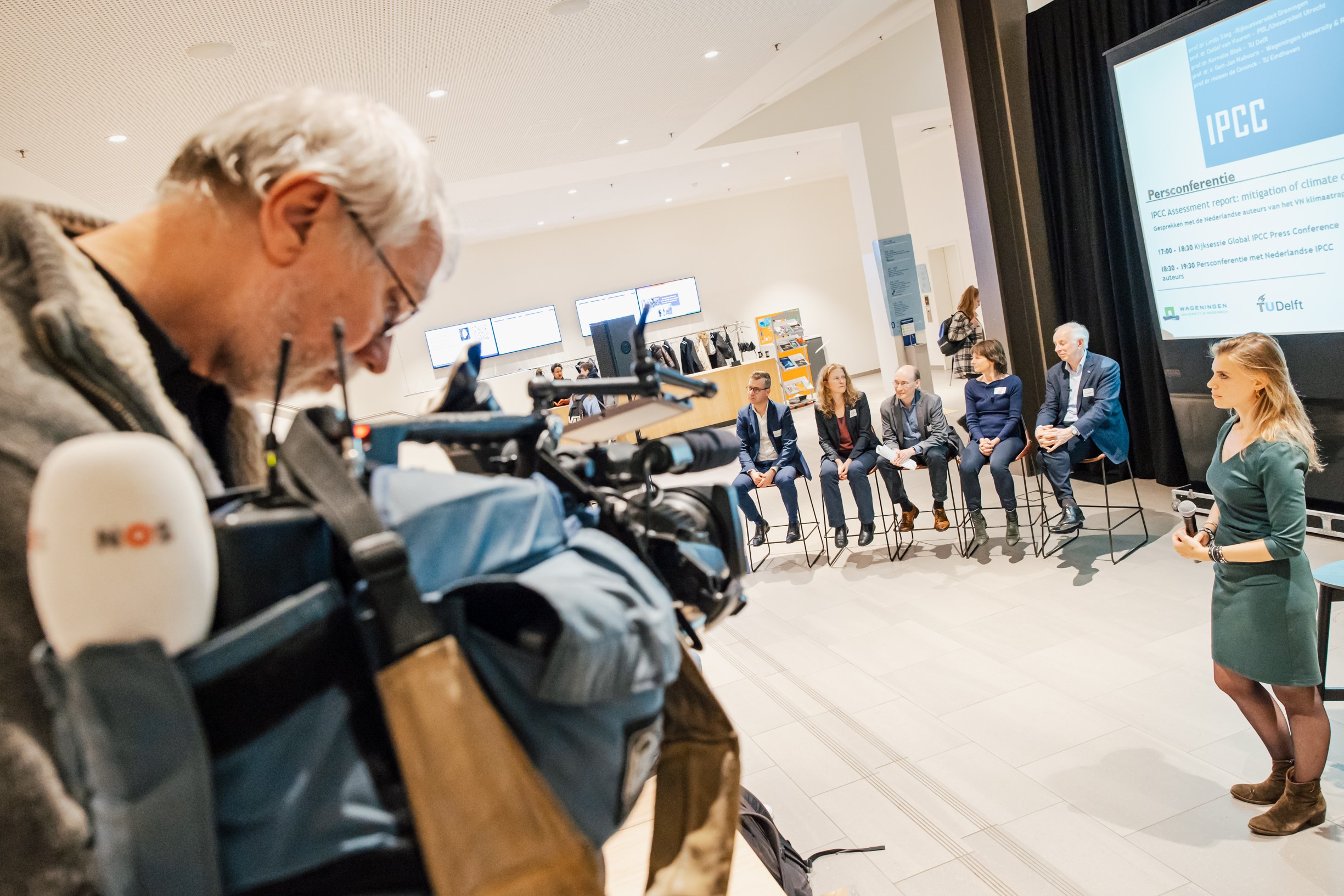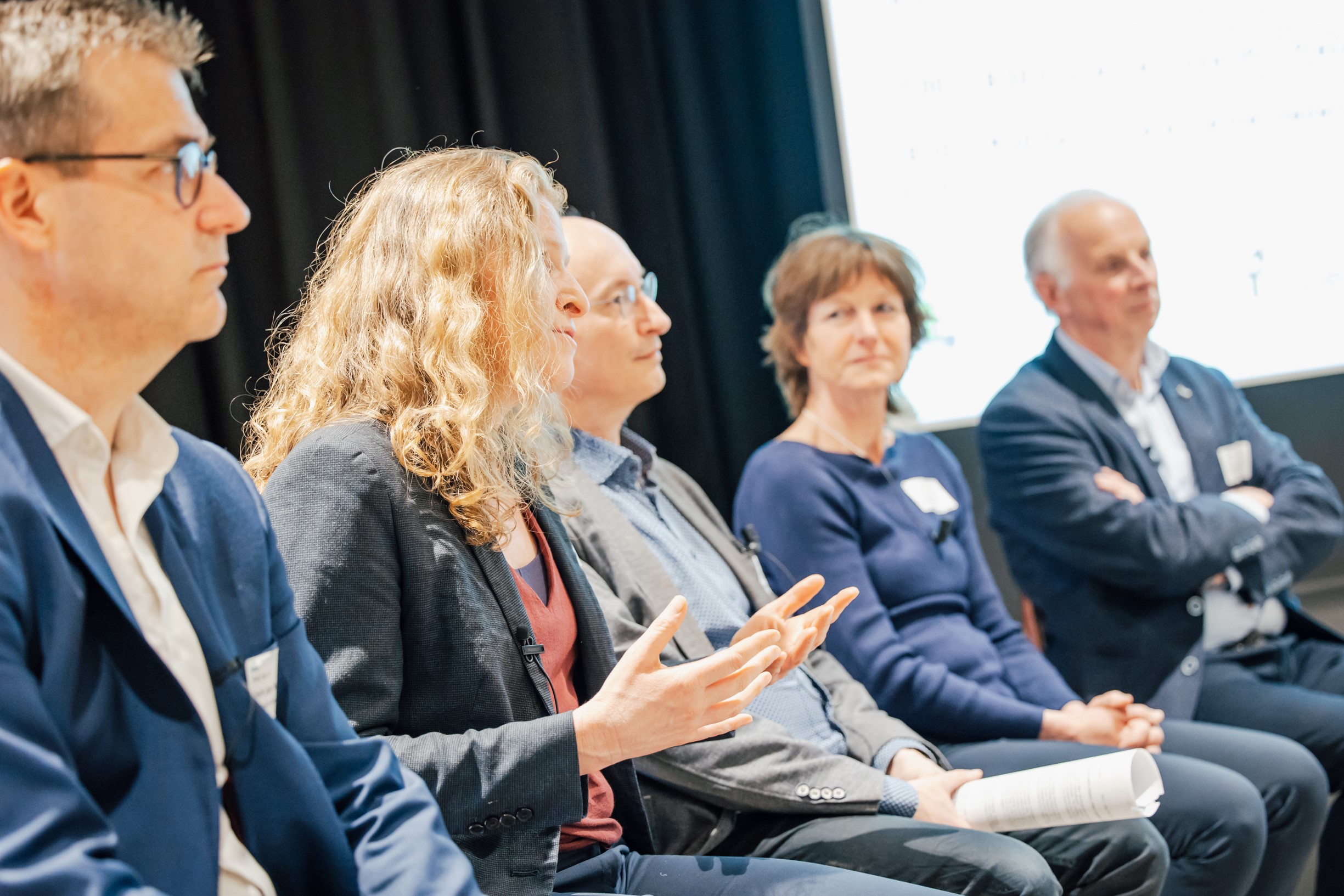Immediate acceleration of global climate action needed to realise 1.5°C goal
The goal of the Paris Agreement on climate change, limiting global warming to a maximum of 1.5°C, is becoming increasingly unrealistic unless countries collectively decide to take action immediately. This is the opinion of the five Dutch climate experts who contributed to the IPCC report that appeared today. Such an acceleration and strengthening of policy measures is still possible, but requires a far-reaching transformation of the systems that underpin our economy, including energy, industry, transport, and agriculture. The coming years will be crucial in this respect.
Increasing global emission of greenhouse gases
In comparison to previous decades, the last decade (2010-2019) witnessed the largest absolute increase in the global emission of greenhouse gases, even though the percentage increase flattened somewhat. In spite of a decrease in the energy intensity (the emission per euro earned) and a lower carbon energy production (the emission per energy unit produced), the growth in industry, transport, energy production, agriculture, and the built environment resulted in increased emissions.
The regional differences involved were very striking. In 2019, the economically developed countries were responsible for 24% of total emissions, whereas the poorest countries were responsible for only 3%. However, the emissions from a growing number of - primarily wealthy - countries decreased over the last 10 years, thanks to a combination of policy measures and autonomous trends.
Promises presently made by countries completely insufficient
The promises presently made by countries on limiting their emissions are not enough to limit global warming to a maximum of 1.5°C. Unless the present plans are tightened, the IPCC predicts that the planet will witness an increase in global temperature of approximately 3.2°C in 2100. In order to limit the increase to 1.5°C, most calculations indicate that global emissions must have reached their maximum value before 2025, must have decreased by almost 50% by around 2030, and decreased to zero by around 2050, followed by a period of negative emissions during which large amounts of CO2 must be removed from the atmosphere. Less far-reaching measures would be needed to ensure that global warming remains well under 2°C, but in this scenario emissions would also have to decrease sharply in the coming years and reach a value of zero a few decades later. The climate policy presently in place is still completely inadequate and will at best lead to a stabilisation of emissions in 2030.

The new IPCC report makes it clear that the coming years are crucial for complying with the Paris Agreement. The path to realising this goal has become very narrow. The only way to ensure that the goals of the Agreement remain within reach is to sharply reduce global emissions before 2030. Crucially, by the middle of the century, net global emissions must have been reduced to zero. This means that this goal must already be the central focus of investments being made today.
Prof. Detlef van Vuuren
Transformations in sectors
Reducing emissions requires a far-reaching transition in important economic sectors including energy, transport, and agriculture. In the energy sector, necessary measures include a reduction in energy consumption, more efficient use of energy, and the use of low-carbon energy sources in the industrial sector and the built environment for example. In some industrial sectors, it is not possible to achieve net zero CO2 emissions. To offset these residual emissions, it will be necessary to remove CO2 from the atmosphere. In the urban environment, opportunities for efficiently reducing emissions include the renovation and reallocation of existing buildings, urban planning, public transport, bicycle lanes and footpaths. Agriculture and forest management can directly reduce the emission of greenhouse gases and trap additional amounts of CO2, and could also contribute by replacing energy- and greenhouse gas-intensive raw materials. When doing so, it will be necessary to remain alert for any potential negative effects on food security and biodiversity.
The costs of various low-emission technologies, such as those used for sustainable energy, have decreased sharply since 2010 due to various factors, including innovation-targeted policy and scaling-up aspects. A stricter mitigation policy and national climate legislation have also led to increased investments in low-carbon technologies and infrastructure, and the private sector has also shown a great deal of interest in reforestation. However, the volume of public and private investments in fossil fuels still exceeds the investments made in mitigation and adaptation.
A package of policy instruments including regulations as well as market-focused tools is needed to significantly reduce emissions and encourage innovation. Using measures that cost less than 100 US dollars per ton of CO2 reduction, global emissions can be cut in half by 2030 in comparison to 2019. Changes in human behaviour such as reduced energy consumption, the use of sustainable energy and sustainable transport, and a reduction in the consumption of meat and dairy products in wealthy countries can make a large contribution to a decrease in emissions in the short as well as long term (40 to 70% in 2050), while at the same time contributing to the well-being and health of the population.

A new element in this report is that it sketches the possibilities available to still avert the most serious climate change scenarios. These include possibilities for behavioural change, political action, innovation and international cooperation, for example in the area of financing and investments.
Prof. Heleen de Coninck
Land use and CO2 storage
Global land use (deforestation and agriculture) is responsible for 13 to 21% of total greenhouse gas emissions. The IPCC report shows that an improved use of land and extra CO2 storage are very important for realising the climate goals, in particular in order to quickly offset emissions that cannot be prevented, and to produce renewable raw materials. The report makes it clear that the production of renewable raw materials and energy (bio-textiles, building with wood, biofuels, and biochemicals) is closely interwoven with sectors such as transport, industry, and energy. This is a major step forward, but it also requires effective land and forestry policy and an implementation that takes biodiversity into account. According to the IPCC, the above measures are needed in many scenarios in order to reduce global warming to 1.5°C again after that target has been exceeded.
Taken together, all the measures in agriculture and forestry (protection of forests and peat, afforestation, decreased emissions of methane and nitrous oxide, improved forest management, building with wood, biomass policy, reduction of food wastage, and agricultural soil management) can contribute around 15% to the total solution, in other words a reduction of 8 to 14 gigatons of CO2 emissions in 2030. This extra CO2 storage is important, also in the long term, to offset emissions that are difficult to prevent and to realise a situation of negative emissions.
Prof. Gert-Jan Nabuurs
Climate action and sustainable development
Another important conclusion of the report is that sustainable development is not possible without climate mitigation and climate mitigation is not possible without sustainable development. In large part, climate measures go hand-in-hand with the realisation of the Sustainable Development Goals (SDGs), but at times these goals can conflict with each other. The limited economic, social, and institutional resources available in low-income and middle-income countries often lead to a high degree of vulnerability and limited adaptability. The sharp decrease in the costs of technologies for solar energy and electrical vehicles has had positive consequences for reducing emissions, but it has also had negative consequences for the environment and for humans due to the extraction of raw materials for batteries in low-income and middle-income countries. Social justice is therefore an important precondition for the use of these technologies, inside countries as well as across borders.
Contribution from the Netherlands
The WGIII report was written by more than 200 experts from all over the world. Five leading Dutch climate researchers contributed to this report and to the Summary for Policy Makers:
- Heleen de Coninck (Eindhoven University of Technology / Radboud University): Coordinating Lead Author for Innovation, technology and technology transfer;
- Gert-Jan Nabuurs (Wageningen University): Coordinating Lead Author for Agriculture, forestry and land use;
- Detlef van Vuuren (Netherlands Environmental Assessment Agency / Utrecht University): Lead Author for Long-term scenarios;
- Linda Steg (University of Groningen): Lead Author for Energy systems and coordinator for feasibility studies;
- Kornelis Blok (Delft University of Technology): Lead Author for Multisectoral perspectives
Information about the IPCC and the report ‘Mitigation of Climate Change’
The Intergovernmental Panel on Climate Change (IPCC) is the organisation of the United Nations tasked with evaluating the risks of climate change. The IPCC does not do any research itself but ensures that policymakers are provided with the most recent and relevant scientific insights in relation to climate change. Every seven years, the IPCC provides a new oversight of the scientific insights on climate change.
The report published today is Part 3 of the overall report and focuses on the mitigation of further climate change and the measures that are needed in that regard (Mitigation of Climate Change). Part 1 was published in August 2021 and dealt with the underlying natural science (The Physical Science Basis). Part 2 dealt with adaptation to the consequences (Impacts, Adaptation and Vulnerability) and was published one month ago.
New elements in this report are: a greater focus on the contribution by measures that regulate the demand for products and services, innovation, the feasibility of measures, and behavioural aspects. The report combines possible developments until 2030, based on promises made by countries to limit the emission of greenhouse gases, with possible mid-term (2050) and long-term (2100) scenarios.
